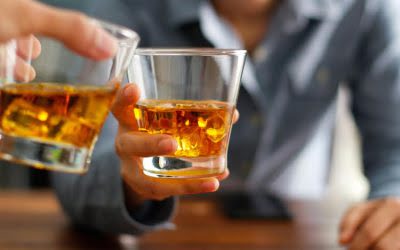Detailed discussions of relapse in relation to NDST and catastrophe theory are available elsewhere [10,31,34]. At Bedrock, we use evidence-based approaches such as cognitive-behavioral therapy (CBT) to help our clients develop coping skills and enhance resilience in the face of setbacks. For some people who drink, it takes quite a few drinks to “get a buzz” or feel relaxed, and they may be less likely to show signs of intoxication compared to others. This is sometimes called being able to “hold your liquor” or “drink someone under the table.” Often these individuals are unaware that their body’s lower response to the intoxicating effects of alcohol isn’t protection from alcohol problems but instead is a reason for caution. Oxford English Dictionary defines motivation as “the conscious or unconscious stimulus for action towards a desired goal provided by psychological or social factors; that which gives purpose or direction to behaviour.
- However, it’s important to realize that relapse isn’t guaranteed, especially if you are vigilant about managing your recovery.
- The risk of relapse is greatest in the first 90 days of recovery, a period when, as a result of adjustments the body is making, sensitivity to stress is particularly acute while sensitivity to reward is low.
- First, in the context of pharmacotherapy interventions, relevant genetic variations can impact drug pharmacokinetics or pharmacodynamics, thereby moderating treatment response (pharmacogenetics).
Ideally, assessments of coping, interpersonal stress, self-efficacy, craving, mood, and other proximal factors could be collected multiple times per day over the course of several months, and combined with a thorough pre-treatment assessment battery of distal risk factors. Future research with a data set that includes multiple measures of risk factors over multiple days could also take advantage of innovative modeling tools that were designed for estimating nonlinear time-varying dynamics [125]. Central to the RP model is the role of cognitive factors in determining relapse liability.
Balanced lifestyle and Positive addiction
Substance use and its immediate consequences (e.g., impaired decision-making, the AVE) are additional phasic processes that are set into motion once a lapse occurs. Thus, whereas tonic processes can determine who is vulnerable for relapse, phasic processes determine when relapse occurs [8,31]. The current review highlights a notable gap in research empirically evaluating the effectiveness of nonabstinence approaches for DUD treatment. abstinence violation effect While multiple harm reduction-focused treatments for AUD have strong empirical support, there is very little research testing models of nonabstinence treatment for drug use. Despite compatibility with harm reduction in established SUD treatment models such as MI and RP, there is a dearth of evidence testing these as standalone treatments for helping patients achieve nonabstinence goals; this is especially true regarding DUD (vs. AUD).
Regarding setbacks as a normal part of progress enables individuals to broaden their array of coping skills, to engage in planning for problematic situations, and to devise strategies in advance for dealing with predictable difficulties. Among the most important coping skills needed are strategies of distraction that can be quickly engaged when cravings occur. Mindfulness training, for example, can modify the neural mechanisms of craving and open pathways for executive control over them. Changing bad habits of any kind takes time, and thinking about success and failure as all-or-nothing is counterproductive. In the case of addiction, brains have been changed by behavior, and changing them back is not quick. Research shows that those who forgive themselves for backsliding into old behavior perform better in the future.
AVE: Cognitive and Affective Responses to a Lapse
When one returns to substance use after a period of abstinence, they experience a negative cognitive and affective reaction known as an abstinence violation effect in psychotherapy. An individual may experience uncontrollable, stable attributions and feelings of shame and guilt after relapsing as a result of AVE. Principles of relapse prevention have been used in the treatment of sex offenders.

A slipup is a short-lived lapse, often accidental, typically reflecting inadequacy of coping strategies in a high-risk situation. The dynamic model of relapse assumes that relapse can take the form of sudden and unexpected returns to the target behavior. This concurs not only with clinical observations, but also with contemporary learning models https://ecosoberhouse.com/ stipulating that recently modified behavior is inherently unstable and easily swayed by context [32]. While maintaining its footing in cognitive-behavioral theory, the revised model also draws from nonlinear dynamical systems theory (NDST) and catastrophe theory, both approaches for understanding the operation of complex systems [10,33].
Cognitive Behavioural model of relapse
As the foregoing review suggests, validation of the reformulated RP model will likely progress slowly at first because researchers are only beginning to evaluate dynamic relapse processes. Currently, the dynamic model can be viewed as a hypothetical, theory-driven framework that awaits empirical evaluation. Testing the model’s components will require that researchers avail themselves of innovative assessment techniques (such as EMA) and pursue cross-disciplinary collaboration in order to integrate appropriate statistical methods. Irrespective of study design, greater integration of distal and proximal variables will aid in modeling the interplay of tonic and phasic influences on relapse outcomes. As was the case for Marlatt’s original RP model, efforts are needed to systematically evaluate specific theoretical components of the reformulated model [1].
